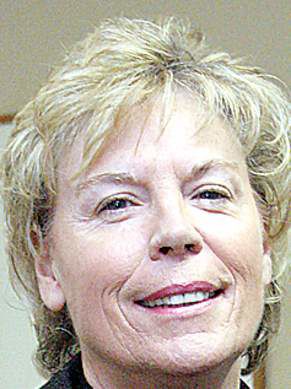Schools want out of health plan
Published 4:00 am Saturday, January 22, 2011

- State Sen. Chris Telfer, R-Bend, is proposing a bill to allow school districts to opt out of the Oregon Educators Benefit Board.
Local school district officials said they could spend less on health care if a change in the law allowed them to opt out of a statewide health insurance plan. And they say the state plan has overwhelmed their employees with high deductibles and rising out- of-pocket costs.
In 2007, the Legislature created a statewide insurance pool for employees of the state’s school districts.
Trending
The thought was that by creating a large pool, they could negotiate lower health insurance costs and stabilize rates.
Local officials say it’s not working.
Premiums have increased, for some of the higher-end plans by as much as 28 percent. Central Oregon school leaders said they can save money and find better care for their employees if they aren’t mandated to be part of the Oregon Educators Benefit Board. But as the law stands: Once you’re in OEBB, you’re in for life.
Sen. Chris Telfer, R-Bend, is proposing a bill, Senate Bill 558, this session that would allow districts to choose whether to be part of OEBB.
Crook County School District Superintendent Ivan Hernandez called the insurance policies offered through OEBB “bad business.”
“I believe what has been imposed on us is not in the schools’ best interest, nor is it in the best interest of business,” Hernandez said. “We’ve allowed a monopoly to drive us rather than be able to shop.”
Trending
In the 10 years Emily Parker has been a teacher with the Bend-La Pine School District, she’s noticed a difference in cost and quality of care. In 2009, the special education teacher at La Pine Middle School was diagnosed with malignant melanoma. She had six surgeries in a five-month span, one which took her right leg, below the knee. She found acupuncture helped with the phantom pains and chiropractic work helped realign her body.
“Deductibles have increased. Co-pays have increased. And the benefits have decreased, especially for alternative care, which like I say, has really benefited me,” she said.
Bend-La Pine Schools Superintendent Ron Wilkinson was the one who approached Telfer about making a legislative change. He said if local districts could participate in the High Desert ESD’s insurance plan, the savings would be in the millions. One of Wilkinson’s biggest concerns with the OEBB plan is the limitations it imposes on school districts in Central Oregon.
“We’re limited in plan design by what OEBB offers,” he said. “They offer a sizable menu, (but) some of the plans are not available in Central Oregon.”
Two years ago, Jean Hillmer, who has been with the Bend-La Pine School District for 15 years, was diagnosed with breast cancer. Initially, she said, her coverage was excellent. But her rates shot up from $125 a month to $647 a month, so she was forced to change plans. After a 14 of her lymph nodes were removed, she battled lymphedema. There was one occupational therapist in Central Oregon, she said, known for helping people battling lymphedema. But the occupational therapist did not accept the insurance plan Hillmer was on.
“I’m grateful for whatever I have,” she said. “But would I like to see some better options? Absolutely.”
Denise Hall, with the educators benefits board, said premiums for OEBB’s plans have gone up. In the 2009-10 year, depending on the plan, OEBB premiums have increased between 7 and 28 percent, Hall said. OEBB offers nine medical plan options available through either ODS or Providence for Central Oregonians.
Hall maintained if the districts had been with other plans, they would have also had rate increases. She said the overall trend in Oregon is rising health care.
“That’s the medical trend in Oregon,” Hall said. “We have had some pretty high usage on our plans. To cover the cost of claims, the premiums need to go up.”
In 2010-11 ODS medical plan No. 7, which had the highest enrollment for Bend-La Pine this year, had a premium rate of $987, a deductible of $500 and a $2,000 maximum out-of-pocket rate. There is an additional $500 co-pay for some surgeries and a $100 co-pay for certain scans and tests. Those costs do not factor in dental or vision care.
In 2008-09, the same plan, which at the time did not have the highest enrollment numbers, had a premium of $808, a $500 deductible and a $2,000 maximum out-of-pocket rate.
Wilkinson said the district’s contribution to school employees is established in the collective bargaining process. He said most of his employees have been driven to choose cheaper plans where at one time they could afford the plans with better benefits.
He said that when the district was insured by Pacific Source, in 2007-08 a teacher could be on the best plan for $97 a month. Now, for OEBB’s top plan, that number is $576 a month.
Hall hopes districts will rethink their decision to try and pull out from OEBB’s plans.
“We would like them to look at the plans and see the value they are getting for the dollar,” she said. “We added a weight management program where employees can go to Weight Watchers and it’s fully paid. We have value-added benefits … including a lower co-pay for chronic diseases, like asthma.”
Hall said that if school districts pulled out, it would make it more difficult to stabilize the insurance costs for the remaining districts.
“The larger the pool, the more likely you gain that stability,” Hall said.
Telfer said she’s confident her bill will become law this legislative session.
“I got a call from one of my school districts, Bend-La Pine,” she said. “They have a problem and this could save them one and a half million dollars, so I submitted a bill to allow school districts to opt out of the statewide insurance pool and go out on the open market and find affordable health insurance for their employees.”








